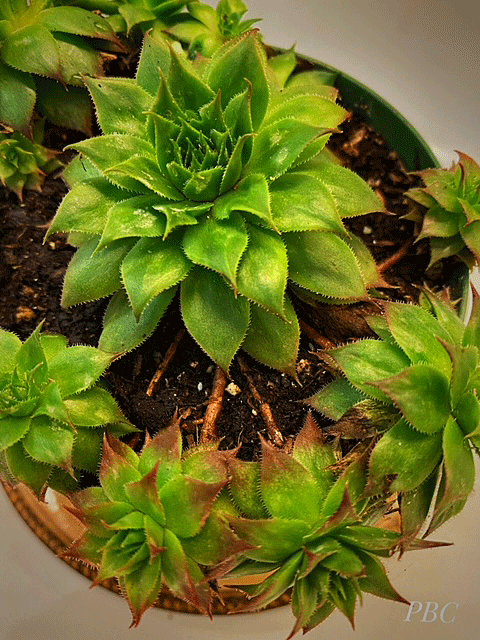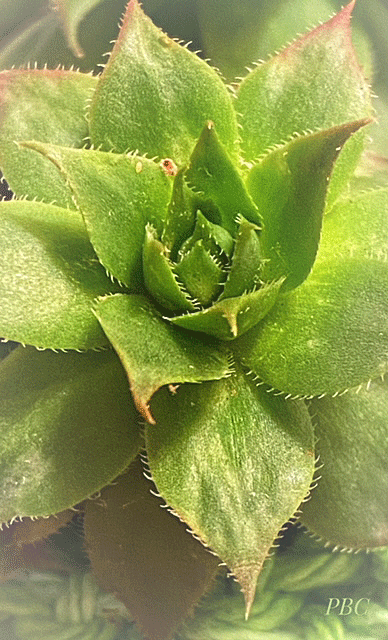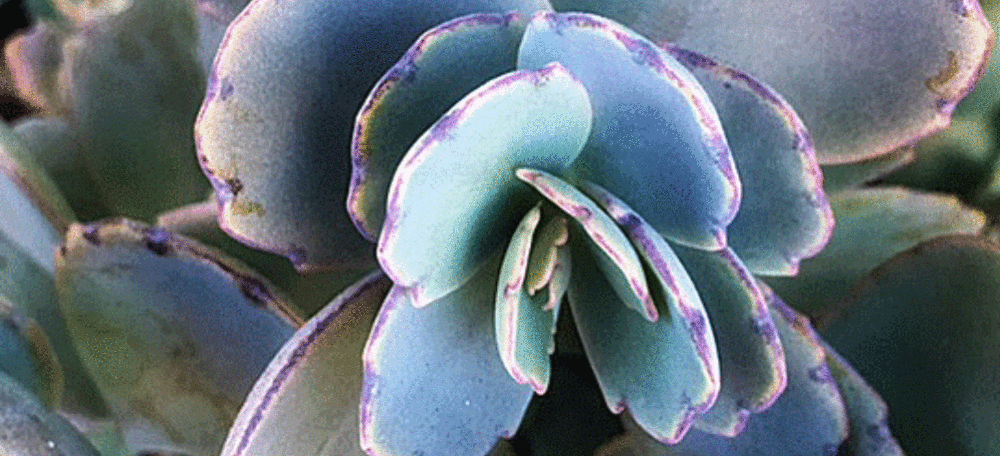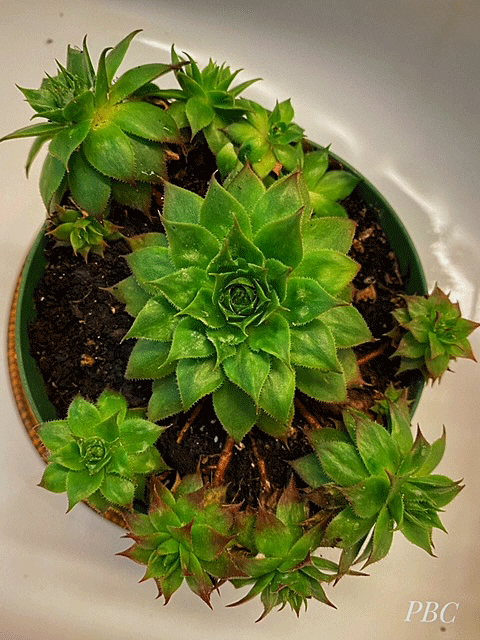 Hens and Chicks, (Sempervivum tectorum) also known as House Leeks, are a fun and easy plant to grow indoors and out. They are considered a hardy succulent and make great container plants. Above you can see one that grows happily in my east facing living room window. The main plant known as the hen, is roset shaped and produces many offsets or chicks around the central evergreen plant. Chicks are attached to the mother plant by underground runners.
Hens and Chicks, (Sempervivum tectorum) also known as House Leeks, are a fun and easy plant to grow indoors and out. They are considered a hardy succulent and make great container plants. Above you can see one that grows happily in my east facing living room window. The main plant known as the hen, is roset shaped and produces many offsets or chicks around the central evergreen plant. Chicks are attached to the mother plant by underground runners.
It’s an Alpine succulent with a natural habitat of 3,000-8,000 feet above sea level in mountainous regions of central and southern Europe.
When I started growing Hens and Chicks and learned that they are Monocarpic, meaning the main plant dies after producing a single flower, usually at 4-6 years, I was a little sad. I’ve since learned that by that time, the central plant will be surrounded by the many new plants it has produced. When this happens, you should remove the central plant.
Their low to the ground growth habit makes them an interesting choice for ground cover. It has an amazing tolerance to poor soil conditions.
If grown in a container it is best to use commercially prepared Cactus/succulent soil, or you can make your own. See the recipe at the end of this post.
There are many varieties and as I’ve learned, fun to collect. Hens and Chicks come in delicate shades of green, red, blue, purple, and copper. They can be found in most nurseries in the succulent section.
They are easy to propagate and children find them fascinating. I remember the first Hen and Chicks I ever saw. I was four years old, and friends of my parents grew them in their rock garden in Toronto,Canada. I guess I’ve always loved plants, especially succulents.
They prefer full sun, but need very little water and fertilizer, especially in winter. The ideal temperature is 65-75°F 18-24°C. Above or below, the plant becomes semi dormant and stops growing.
Hen and Chicks are self propagating and to start new plants, gently remove the chick from the mother plant and place in a small container. When the chick is well established, you can transplant to a slightly larger container or plant in your outdoor garden weather permitting. Chicks require very little soil and can also be grown in wall and rock crevices. You should remove the chicks every two years to prevent overcrowding. You can see why this will be necessary in the photo below.
Soil Recipe
To make your own soil appropriate for Hen and Chicks, combine two parts top soil, two parts sand, and one part perlite. Mix thoroughly.

Lastly a closer look at the hen. I hope you have gained some useful information about Hen and Chicks and you will want to start your own collection. If you do, please let me know which ones are your favorites. Enjoy.

